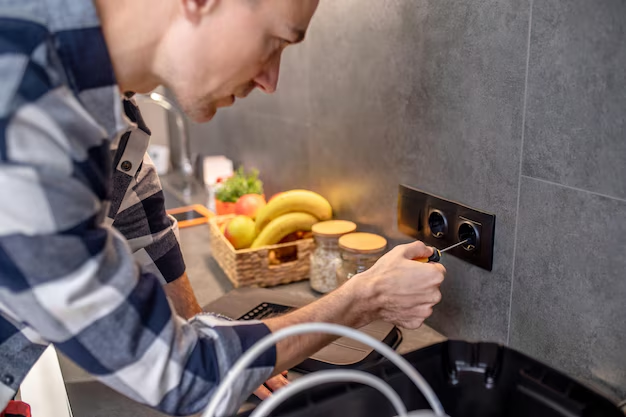How to Choose the Right Generator to Power Your Refrigerator
When the power goes out, keeping your refrigerator running is often a top priority. Whether it's preserving food during a storm or while camping, understanding what size generator will power your refrigerator can save both time and money. While it may seem simple, selecting the proper generator involves considering wattage, efficiency, and additional appliances you may run simultaneously. This guide will equip you with the knowledge needed to make an informed decision.
Understanding Refrigerator Power Needs
🔌 Wattage Demands
To determine the generator size required for a refrigerator, it’s essential to know its wattage requirements. Refrigerators typically require between 100 and 800 watts to run, but they need more power when starting due to the compressor kick-starting the cooling process. Generally, this startup surge can demand two to three times the running wattage.
How to Find Your Refrigerator's Wattage
- Check the User Manual: Most refrigerators list their power requirements in the user manual.
- Label Information: Look for a label inside the refrigerator, often on the inside wall or behind the unit, listing details such as amps and voltage.
- Calculate Manually: If only amps and volts are listed, multiply these numbers to find the wattage (Watts = Amps x Volts).
🧊 Additional Considerations
- Energy-Efficient Models: Modern, energy-efficient refrigerators require less power.
- Older Appliances: Older units typically consume more power and may need a bigger generator.
- Extra Features: Fridges with dispensers, icemakers, or freezers will have higher energy needs.
Choosing the Suitable Generator
Types of Generators
Generators come in various types, each offering different advantages and sizes to match your needs.
🏠 Standby Generators
Standby generators are permanently installed and automatically turn on during a power outage. They are powerful enough to handle higher wattages—perfect for massive power needs or whole-home systems.
🔋 Portable Generators
Portable generators provide flexibility, allowing you to move them wherever necessary. They come in various sizes, suitable for smaller power demands like a refrigerator alone or a combination of essential appliances.
⚡ Inverter Generators
Inverter generators are relatively new technology that offers quiet and efficient energy production. Ideal for sensitive electronics, they are often lighter and more compact.
Generator Sizing for Refrigerators
To choose the right generator:
- Estimate Starting Power: Multiply the refrigerator's running wattage by two or three to cover the starting surge.
- Consider Combined Load: Include the wattage of additional devices you plan to run simultaneously.
- Select Generator Capacity: Choose a generator with a slightly higher wattage capacity than your total estimate to ensure efficiency and handle additional unforeseen loads.
Practical Considerations When Choosing a Generator
Fuel Type and Availability
Choose a fuel type based on availability and preference:
- Gasoline: Most common and accessible.
- Propane: Cleaner burning and often available in areas where gasoline may not be.
- Dual Fuel: Offers flexibility to switch between gasoline and propane.
Noise Levels
Generators can be loud, especially in residential areas. Choose a generator with a comfortable noise level, typically measured in decibels (dB). Inverter generators usually offer the quietest operation.
Portability
If mobility is important, focus on the generator's weight and dimensions. Portable generators often come with wheels or handles for easy movement.
Run Time and Fuel Efficiency
Review the generator’s run time at given loads. Longer run times reduce the need for frequent refueling, which is essential during prolonged outages.
⚙️ Sample Calculation and Selection
Example Scenario
Suppose you have:
- A modern refrigerator with a running wattage of 200W.
- Additional essential items like a fan and a smartphone charger totaling 100W.
Estimated Starting Power for Refrigerator:
200W x 3 (startup surge) = 600W
Total Running Power Needed:
Refrigerator 200W + Other Devices 100W = 300W
Appropriate Generator Selection: Select a generator around 800W to 1000W. This setup covers the starting surge and allows additional load, offering a buffer against unforeseen power spikes.
Summary Tips for Choosing the Right Generator 📝
- 🔍 Identify Power Needs: Understand your appliance’s running and starting wattage.
- 🛠️ Consider Combined Loads: Account for all devices you wish to power simultaneously.
- ⚖️ Balance Capacity: Choose a generator with slightly more capacity than needed for safety.
- 🧳 Evaluate Portability and Noise: Select based on your environment and mobility needs.
- ⛽ Check Fuel Type: Make sure you choose a fuel type that is easily accessible and preferred.
Conclusion: Making the Most of Your Generator Investment
Investing in the right size generator ensures your refrigerator and other essential devices stay powered during an outage. By understanding the wattage requirements and weighing additional factors such as fuel type, noise level, and portability, you can confidently select a generator that fits your specific needs. Always include a little extra buffer in wattage to accommodate future needs or unforeseen changes, and your investment will provide peace of mind during unexpected power losses.
Choosing a generator doesn’t have to be daunting. With these considerations, you can make a well-informed decision to keep your home running smoothly in any situation. Remember, the best generator is one that aligns with both your immediate power needs and your lifestyle preferences.
